Last Friday, with the 125th anniversary of Van Gogh’s death approaching, I visited one of the most popular pieces at the Getty Museum: Irises. Through conversations with visitors, my own observations, research, and random musings, I’ve collected five different ways people come to view this Van Gogh masterpiece.
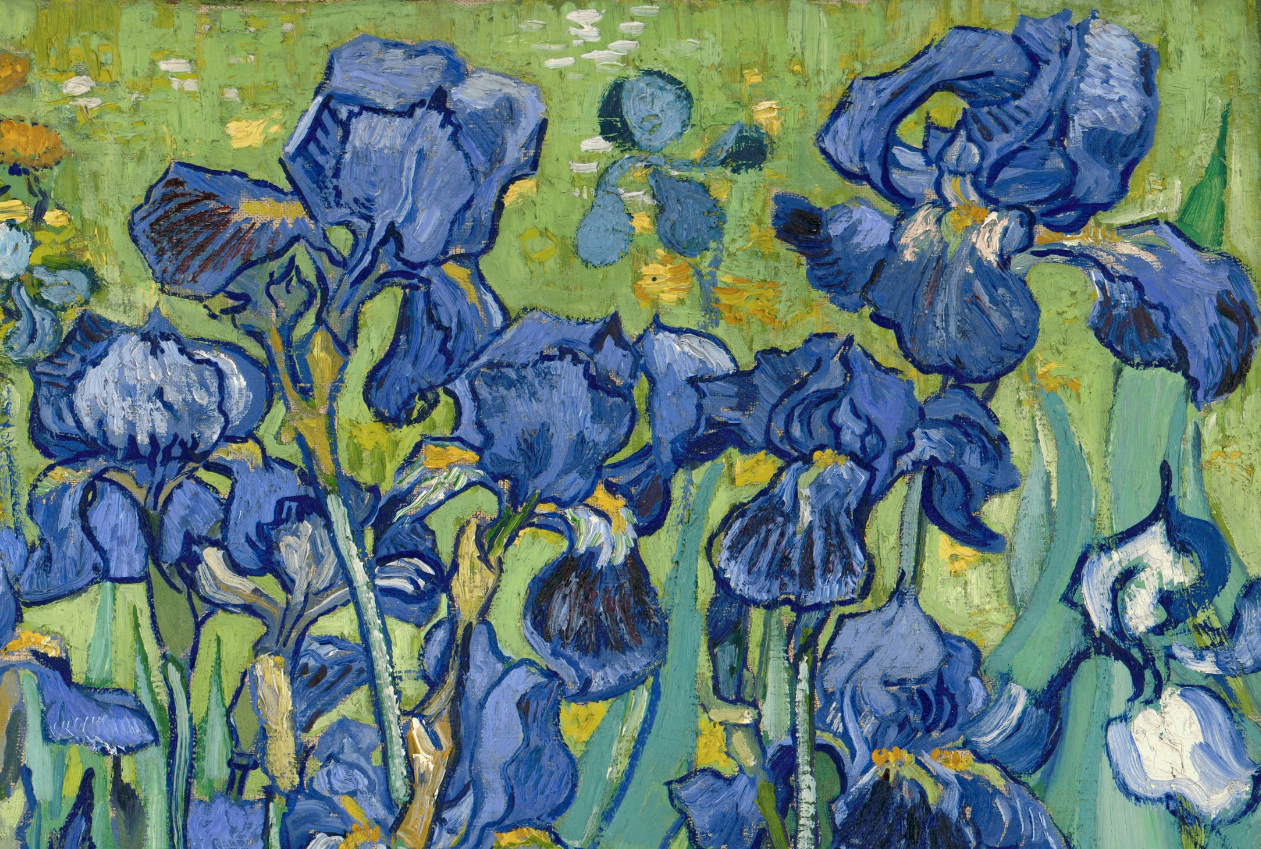
Detail of Irises, 1889, Vincent van Gogh. Oil on canvas, 29 1/4 x 37 1/8 in. The J. Paul Getty Museum.
1. In a Crowd
One of the most obvious ways that people see the painting is in a crowd. The gallery is almost always filled, and you might have to wait before you can get up close. The anticipation builds as you start in the back row, and slowly move until you are close enough to see the brushstrokes of Van Gogh’s thick paint.
2. Online
David from Colorado said that this was his first visit, but he had already seen the painting online. In addition to being available through the Getty’s Open Content program, the painting is often seen on social media. Just search #irises on Instagram for a taste of the painting’s popularity.
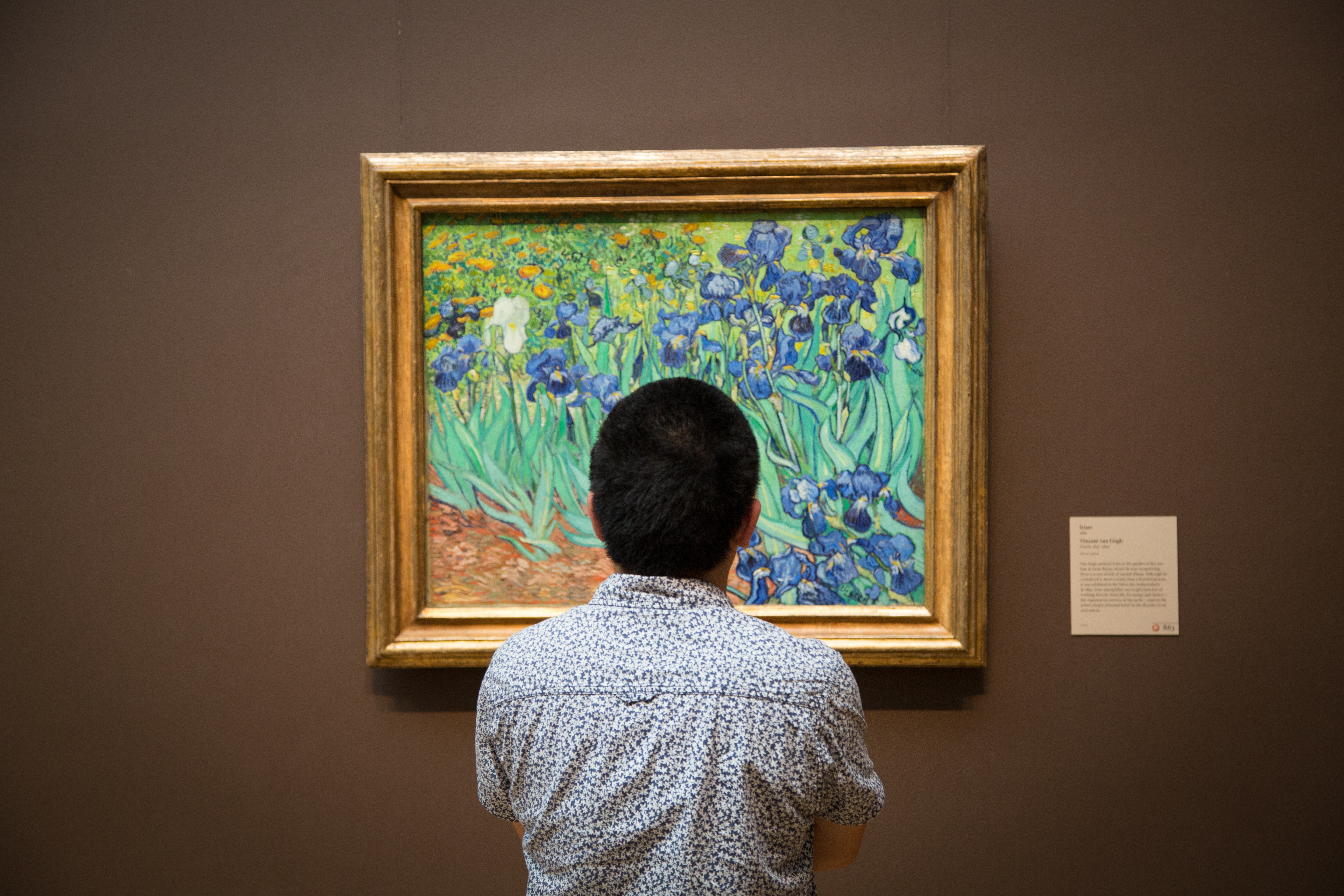
3. Alone
With a little luck and an early arrival to the museum, you just might be able to enjoy Irises alone. If you arrive right at 10 a.m. when the museum opens, the quiet gallery provides a perfect backdrop to really examine the painting. Solitude and seclusion gives the gallery a sense of intimacy that makes it one of my favorite ways to see it.
4. Multiple Times
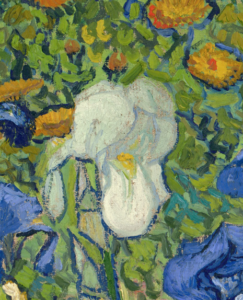 During my observations I noticed people often came back to see the painting multiple times in one day. I wonder if it’s due to its emotional complexity. One visitor felt the painting is filled with melancholy and sadness, pointing out Van Gogh’s stay in an asylum and the lone, white flower in the midst of the vibrant, purple irises. On the opposite end of the spectrum, another viewer felt the painting is full of joy, pointing out how vibrant the colors were, and how they manage to rise out of the seemingly dry, brown dirt.
During my observations I noticed people often came back to see the painting multiple times in one day. I wonder if it’s due to its emotional complexity. One visitor felt the painting is filled with melancholy and sadness, pointing out Van Gogh’s stay in an asylum and the lone, white flower in the midst of the vibrant, purple irises. On the opposite end of the spectrum, another viewer felt the painting is full of joy, pointing out how vibrant the colors were, and how they manage to rise out of the seemingly dry, brown dirt.
5. Internationally
Visitors from all across the world viewed this famous Van Gogh. In just one hour I heard multiple languages—French, Italian, Chinese, Korean, German, and more. Irises seems to rise above cultural boundaries—a Dutch painting inspired by Japanese ukiyo-e prints—to strike an emotional resonance amongst all viewers.
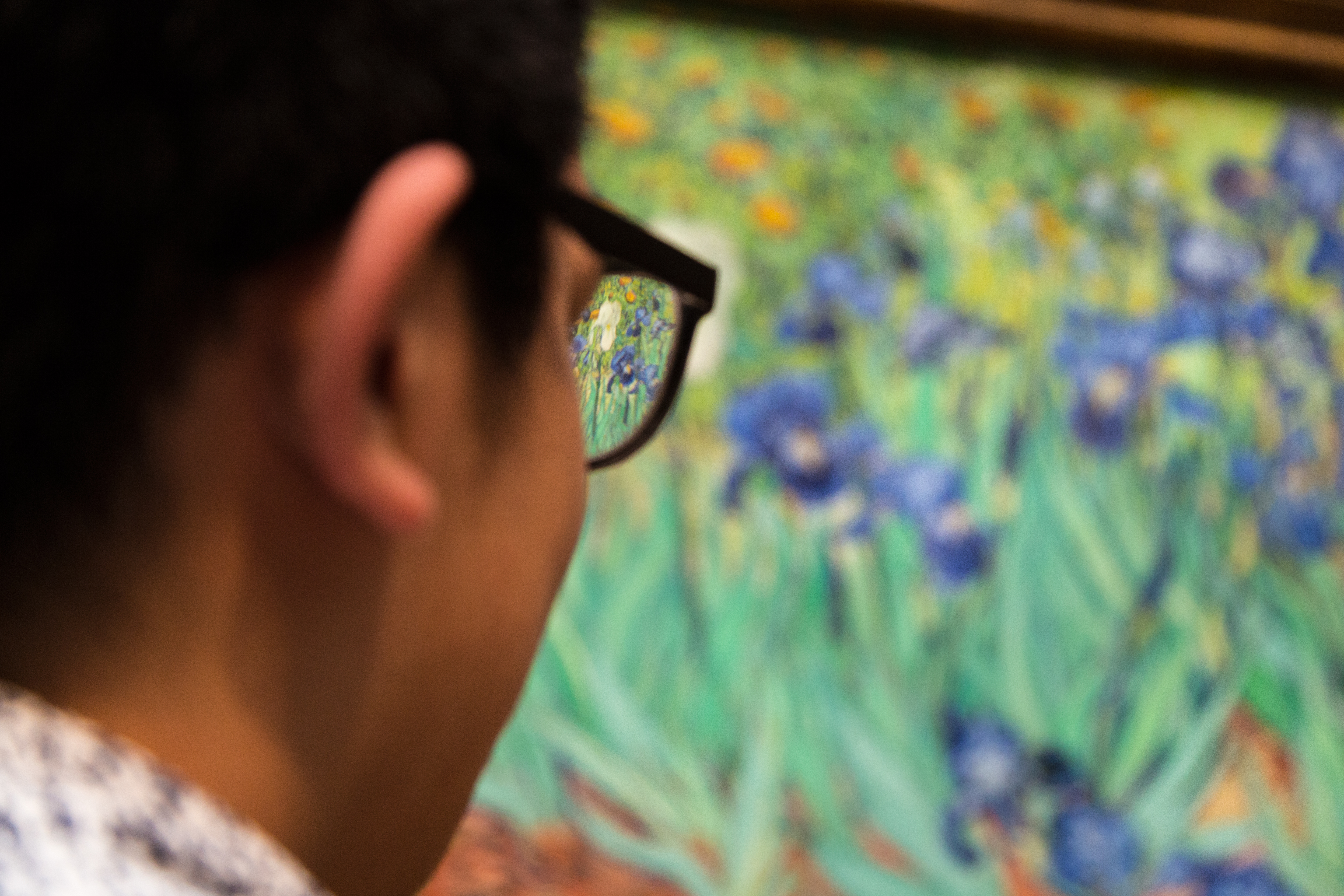
One of the great things about art is how we all bring our own perspectives to it. How do you see Irises? Let us know in the comments.



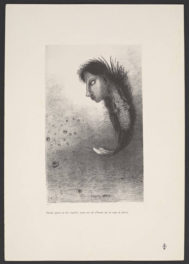

love this post
I have two different Van Gogh Iris pictures in my home. I spend most of my time alone studying them. But I always visit the Iris painting at The Getty. They really know how to showcase art there. It is my favorite museum in the world.
Great post, Chenglin! I think it’s more fun to see it online or in books because it helps build the excitement until I finally see Van Gogh’s painting in real life.
Great read. This is actually my first time seeing this painting.
Thank you for bringing Vincent’s work to the web. He was an incredibly talented artist who was barely recognized during his brief lifetime. Very sad that although his life was short & his style rejected, we are now recognizing & appreciating his brilliance ~ 125 years after his death. Studying his works gives the viewer an insight into his emotional state at various stages.
Vincent painted the white IRIS.. representing JESUS.. one perfect among others.. . I was attracted to his paitings without knowing he was a believer as me…¡¡ John 1.12 “But to all who did receive Him, He gave them the right to be children of God..”
I had the great luck to visit the Getty in the early 90’s and, late in the day just before closing, get to be alone with this amazing painting. I was able to stand for a few moments just drinking it in, and then get nice and close to examine the brush work. A thrill I’ll never forget. Thank you for this lovely piece that brought me back to that day.
I came from Europe to see them in the Getty Museum. They are living, vivid creatures, looking to each other, speaking, arguing, waving hands, emotional, excited…..if you forget that they are flowers, you see people.
I find them capricious and relaxed,
They quicken my imagination,
They are unique and so nice!
The canvas is a pride of nation.
The light falling on Irises and other works is carefully controlled, but I like to see it in winter. The softer light serms to make the colors brighten. Late afternoon during a visit is also nice.
The flowers in the painting look like daylillies.
I saw the Iris’s painting on opening night about 20 years ago. It was uncovered and an armed security guard was standing next to it. The purple colors were so thick and fantastic. I went back at a later date and the painting had a clear cover over it. It still looked great but I’m glad I rushed over the first time from work on opening day.Incidently, the strawberry cake in the eatery was divine!
I have been immersing myself into Van Gogh’s melancholy . Feeling so sad for him!
How do I find out how much his paintings are worth and who do I take them too. I live in Canada Nova Scotia. Have a few of his paintings. One is the irises from 1853-1890
Hi Tanya, A good place to get started is our Appraisals Research Guide. Unless you are possession of an undiscovered treasure, you likely have reproductive prints. But you can do your own research with the resources listed in the guide. Best of luck! —Annelisa / Iris editor
I love this post. My exposure to Van Gogh’s work has been a collection of each of these methods. I remember seeing Irises for the first time at the Getty Villa when I was just a child. It felt so out of place with the red velvet curtains showcasing it, but there was something about its grandeur that made me take an extra moment to appreciate it. Back then there was no glass and as I came to gaze upon it multiple times I came to appreciate the brush strokes, colors, and impasto more and more. It broke my heart when I saw it newly displayed at the Getty with the glass. I appreciate the need for the glass, but I am forever grateful for those moments with the painting before the glass. Those intimate moments are what ultimately developed my love for Van Gogh. I have found that his use of impasto and color is truly best appreciated in person.